Snook Fishing Secrets From One Of The Best Snook Experts In The World
- By: Joseph Simonds
- on
- Found In: Fishing Tips, Inshore Fishing, Snook Fishing Tips, Snook Posts, Wade Fishing
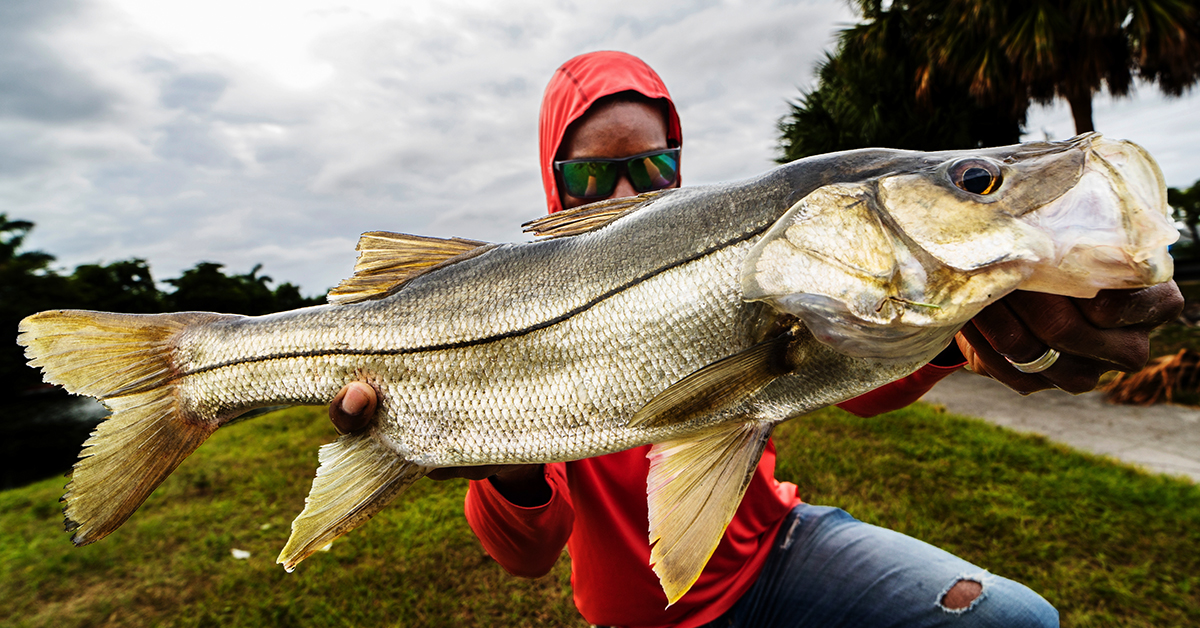
It’s snook time!!
The other day I was surfing YouTube looking for some info on catching snook and I came across this amazing seminar by Captain Scott Moore on Bill Miller’s YouTube channel.
Capt. Moore is widely regarded as the world’s best snook fishing guide. Here are some of his accomplishments:
- 1983 World Record Holder for Largest Snook on 2lbs Test Line
- Founder of the Florida Guides Association
- Florida Sportsman’s Conservation award in 2001
- Don Hampson Conservation of the Year Award in 2004
- William R. Mote award in 1998
Captain Bill Miller, who’s YouTube channel the seminar is on, is a world-record holder himself, as well as a former host of “Hooked On Fishing.”
The seminar is chock full of amazing advice on how to catch snook and is a whopping 46 minutes long! Since I know most of you guys don’t have that kind of time, I wrote out a summary of the seminar with his main ideas and secrets.
5 Keys To Catching More Snook
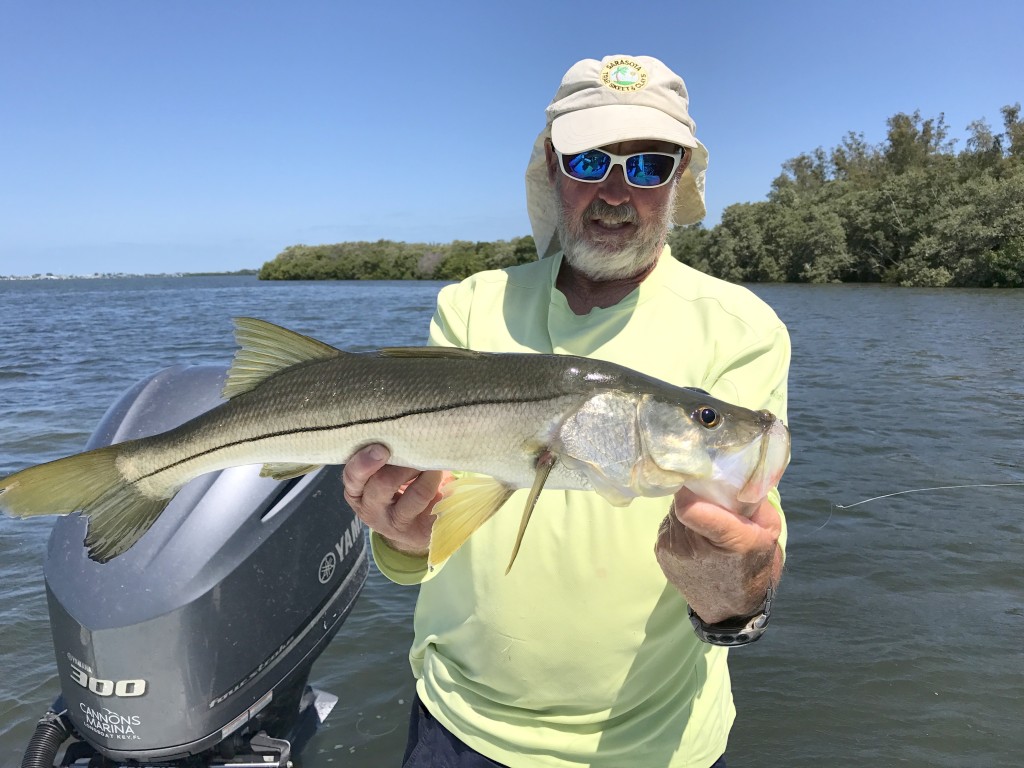
Capt. Moore has tons of knowledge when it comes to catching snook, and this seminar is full of tips and tricks, but I’ve boiled it down to 5 main keys you need to know to catch more snook today:
- Make sure to use the right gear for catching snook
- Make sure to use the right bait for catching snook
- Learn snook feeding and migration trends
- Correctly approach a snook spot (here he gives a HUGE secret)
- Land your snook like a pro (here he shows how to not get broken off)
Alright let’s dive in!
The Right Gear For Catching Snook
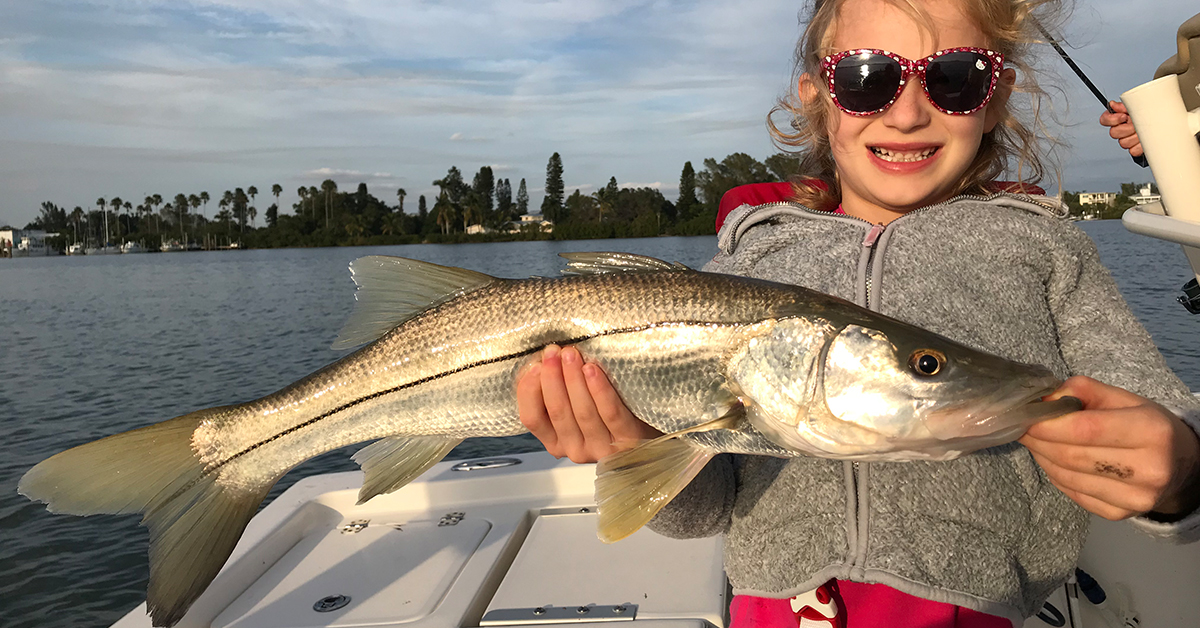
The first thing to address if you want to consistently catch snook is to make sure you have the right gear.
Hooks
Capt. Moore likes a variety of hooks for different situations, but his favorite hook is the 254 Eagle Claw hook. This is because they have small barbs, so they don’t rip up the fish’s mouth, and they are light, so the bait doesn’t have to carry a lot of weight and can act more natural.
He also likes bleeding hooks (red-colored hooks) because they attract extra attention to your bait.
In addition to the 254 Eagle Claw hook, which is a j hook, Capt. Moore also likes to use circle hooks, especially when he’s fishing live bait under a cork.
As far as what size hook, he usually uses a 1/0 or 2/0 eagle claw hooks with pilchards, but if he’s using bigger pinfish, he’ll get a stronger like a 3/0 or 4/0.
Leader
Capt. Moore mostly uses 30 lb. fluorocarbon leader when he’s fishing for snook. One interesting point he makes is that in reality, it doesn’t really matter how strong of a leader you use. If a snook gets her gills on the leader, even if it’s 50 or 60 lb. test, her gills are so sharp that they’re going to cut right through the leader. (We’ll go over how to prevent this when we talk about how to land snook later.)
Another useful tip Capt. Moore drops in here is the importance of using fluorocarbon leader when fishing for snook under dock lights at night. Since fluorocarbon keeps light refraction to a minimum, fluorocarbon is a necessity when fishing under dock lights.
Rod, Reel and Line
Capt. Moore doesn’t go into too much detail about the rod, reel or line (besides mentioning that he uses 7′ 6″ and 8′ rods), but that’s ok because we cover that in our post 5 Tips to Catching Snook In Florida.
The Right Bait For Catching Snook
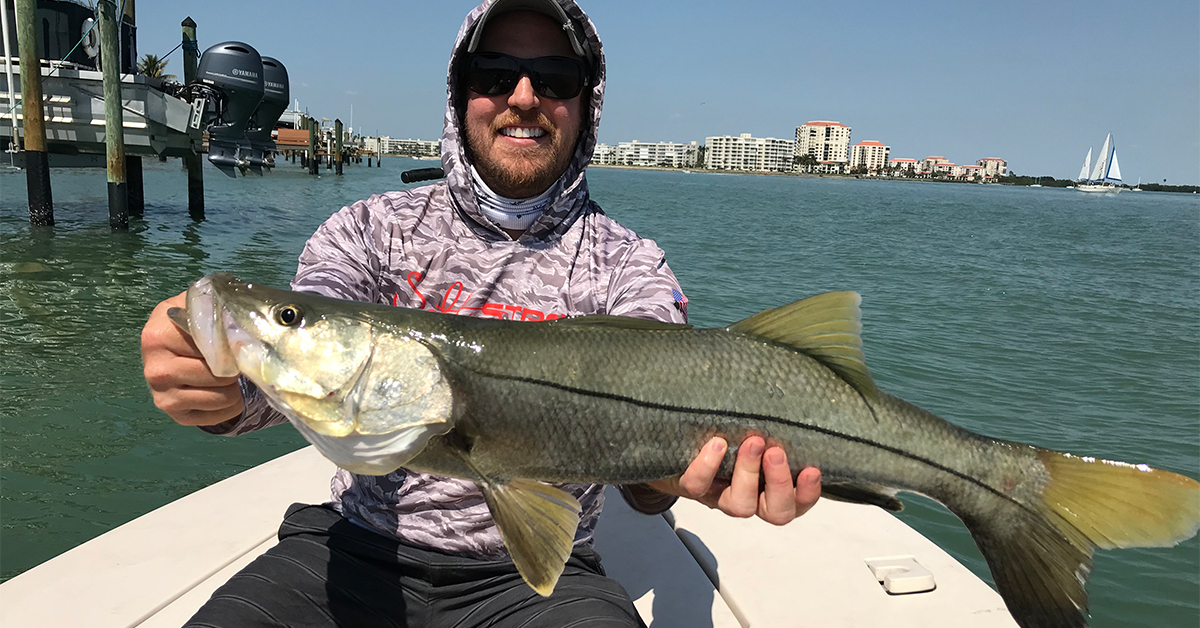
Capt. Moore, being a guide that takes out customers with a variety of fishing skills, uses a lot of live bait. Here are his favorite few:
Pilchards
Pilchards (aka whitebait or scaled sardines), are one of his favorite baits. He uses them in the spring and fall, freelined or under a cork.
Pinfish
Pinfish are another one of Capt. Moore’s go-to baits. He uses them year-round, and like the pilchard, fishes them freelined or under a cork.
Shrimp
All inshore fish, from tiny trout to the Silver King, eat shrimp, and snook are no different. Capt. Moore especially likes to use them in the winter time.
Cut Bait
Some of Tampa Bay’s biggest snook have been caught on cut mullet while fishing for tarpon in the channels near downtown Tampa. Another prime spot to use cut bait is near the edge of a channel on a flat. The stinky bait will attract small fish, such as pinfish, which will in turn attract snook.
Crabs
A commonly overlooked bait for snook are blue crabs. In the spring, small blue crabs get washed out of the smaller bays, and snook love them.
Live Bait Tips
- Don’t over chum. Snook are smart and can get “chum shy,” where they’ll only eat the chum and not the ones with your hook in them.
- Fish live bait like artificial lures. This is one of Capt. Moore’s big secrets. This will help you cover more ground and catch more fish.
Artificial Lures
Capt. Moore doesn’t speak much about artificial lures in this video, likely because he mentions that the speaker after him covers artificial lures.
However, we love artificial lures and have covered them extensively here. Check out Live Bait vs. Artificial: Which Fishing Technique Is Best For Inshore Fishing? or 3 Reasons Artificial Lures Can Be Better Than Live Bait [Inshore Fishing] for more on artificial lures.
Snook Feeding & Migration Trends
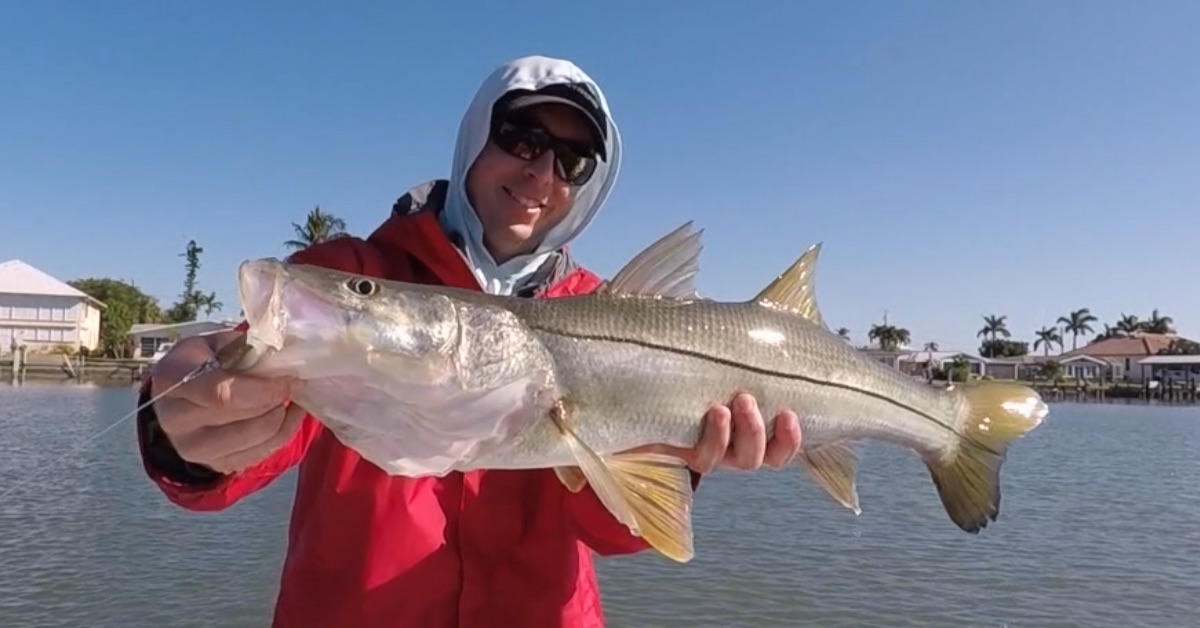
At Salt Strong we’re all about fishing trends, and Capt. Moore touches on them as well. Below we’ll talk about seasonal trends, the best times of day to catch snook, the best tides to catch snook, and Capt. Moore’s favorite type of structure to catch snook.
Winter
Snook, being subtropical fish, hate cold water, so in the winter they go up into the deeper rivers and channels where the water is warmer. You can find snook in these areas by slowly bouncing shrimp on the bottom.
Spring
In the spring, the water starts to heat up. Snook move out of their winter time haunts in the river, out towards their summer beach homes.
The best place to catch snook in the spring are in the areas surrounding the mouths of rivers. Mangrove islands, flats and points are prime areas for this time.
Summer
In the summer, snook are out on the beaches, in the passes, and in the surrounding flats near the beaches and passes.
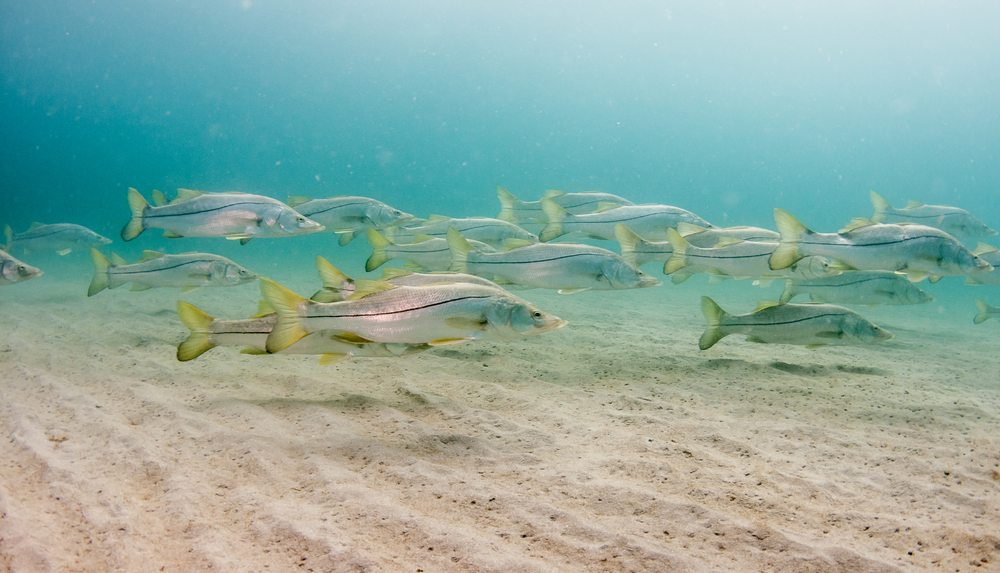
When fishing beaches, there are two things to keep in mind:
- Snook are patrolling the swash just a few feet from the shore looking for food. The biggest mistake anglers make when fishing the beaches for snook is that they’re wading waist deep in the water, casting as far out as they can. In reality the fish are actually behind them.
- The key to successful beach fishing is a wind coming in from the water. When there’s wind going out from the land, and the water is dead calm, there’s less of a swash for bait fish to get into, and for snook to pick them out of.
Fall
In the fall the fish are back in a transition period, leaving the beaches and heading to the rivers. They can be found on the flats, around mangrove islands and around points in the bays and near river mouths.
Best Tides for Snook
Capt. Moore’s favorite tide to fish is the beginning of an incoming tide.
During low tide, the fish are more concentrated in the deeper channels, because there’s not enough water for them up on the flats. As the tide comes in, snook leave the channels to cruise the flats and mangrove shorelines for food.
Capt. Moore likes to position himself on the channel edges, so that the snook have to pass him on their way to the flats. As they swim out of the channel towards the flats in search of food, his bait just happens to be waiting for them and PA-POW! Fish on.
Another key thing to keep in mind about tides is that snook typically feed during the beginning of the tide. If you’re fishing the middle or end of the tide, the snook have often had their fill by this time, and are waiting for the beginning of the next tide.
Time of Day
Snook, like most fish, feed mostly in the 2 hours surrounding dawn and dusk, so this is your best chance to catch them.
Night fishing for snook is really popular, too, and Capt. Moore has an invaluable piece of advice here: it’s not always necessary to go out super to late to catch snook. Remember that snook like to feed in the beginning of the tide, so if the tide starts to come in at 9 or 10 pm, fish then.
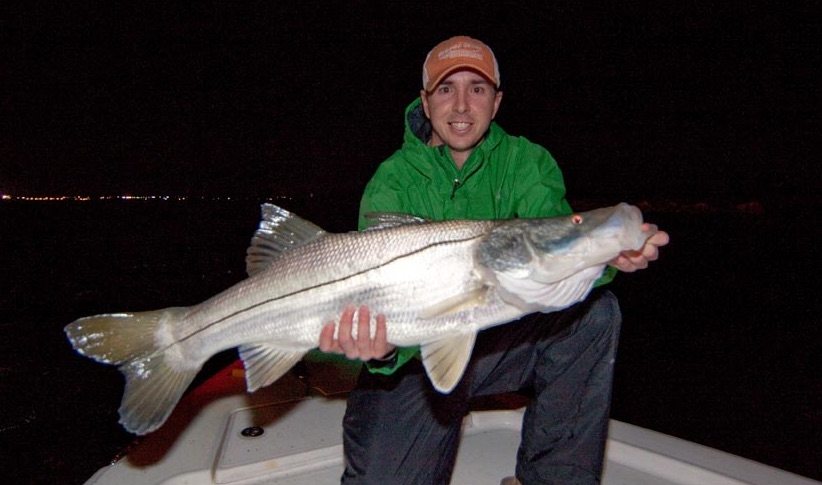
Structure
Like we’re always preaching at Salt Strong, Capt. Moore emphasizes the need for structure to find snook.
Although most people like fishing bridges or docks for snook, Capt. Moore’s favorite hunting ground is on the flats. He loves fishing mangrove islands, potholes, swashes and channels out there.
Capt. Moore’s key to success on the flats is fishing the tide correctly. Like I mentioned in the tides section above, he stages himself on the edge of a channel during an incoming tide. This way, the snook come to him as they leave the channel and flood out onto the flats.
How To Approach A Snook Spot [Secret Approach]
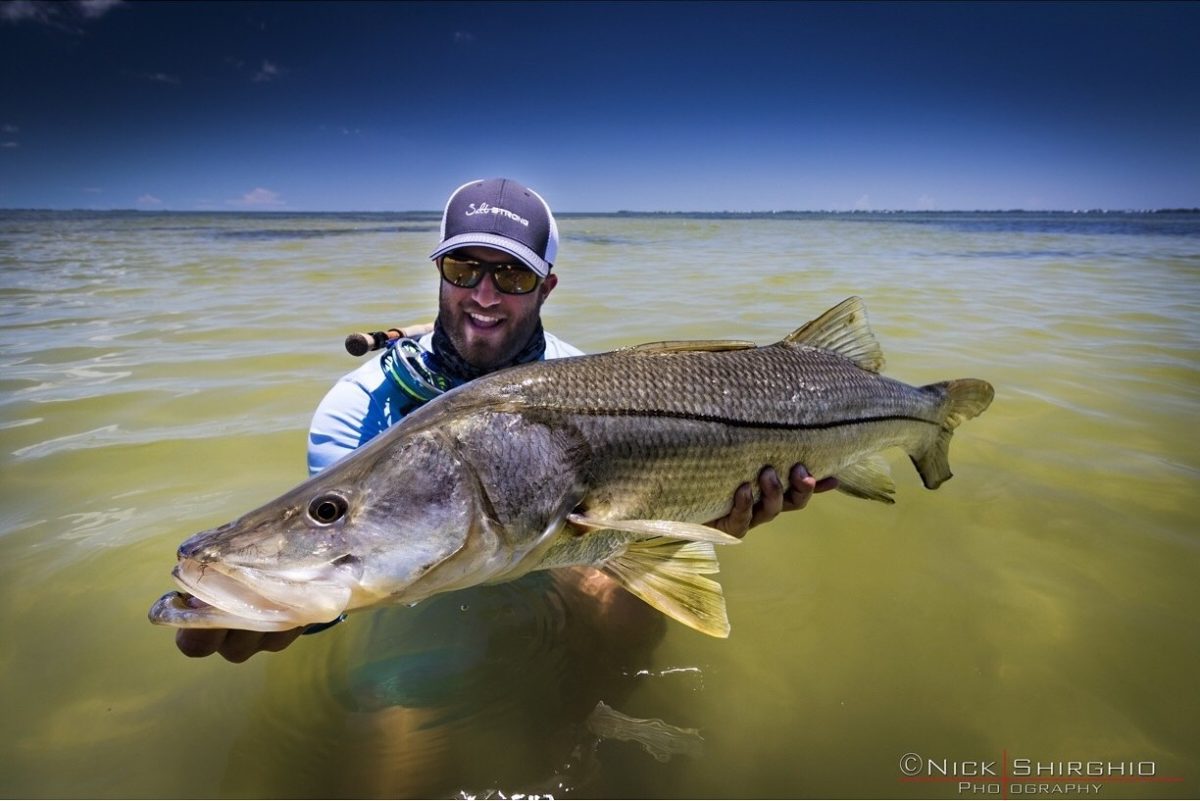
Snook, sometimes called “Linesiders,” are known for the characteristic black line that runs along the side of their bodies. That line is called their lateral line and allows them to sense vibrations in the water.
When approaching a snook spot, it’s important to do so very slowly and quietly. Snook can sense when a boat is in the area, and if you come charging in, it’ll spook them off and you’ll find yourself scratching your head, wondering why there’s no fish in your snook honey hole.
Another key that Capt. Moore brings up is that snook can feel when your boat is swinging. They think it’s a shark or porpoise, and will get scared off. In order to stop your boat from swinging, you can have two power poles, or (the cheaper option) you can stake a pole in the ground after you’ve anchored up, which will stop your boat from swinging.
But here’s the real secret to catching snook: get out of the boat and wade to your spot. Years ago this was the secret of all good snook fisherman.
No hull slap, no motor and no swinging boat will really decrease your profile in the water and let you approach snook without them knowing you’re there.
“If you really wanna catch snook, wade fishing is the deadliest.” – Capt. Scott Moore
How To Land Your Snook (And Not Get Broken Off)
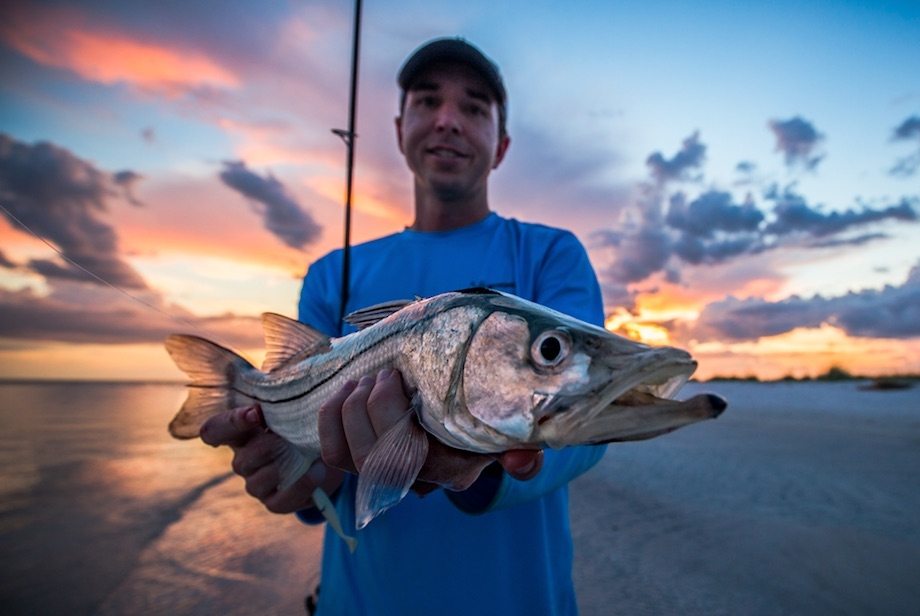
Alright so you have the right gear, you have the right bait, you’ve found the snook, you’ve approached them so sneakily a ninja would be proud…how do you ensure you’ll actually get the snook in the boat? Here are some tips:
- Keep the line tight. If you’re freelining a pilchard, or fishing a pinfish under a cork, make sure to keep the line tight the entire time. A loose line will make it easier for the snook to get her razor sharp gills on the leader and break you off.
- Don’t let the snook go into the mangroves. If she wraps you around the mangrove roots, you’re toast. To stop her from getting you in there, try to turn her head when you see her heading that direction. The best thing you can do is to get her to jump. When snook jump they often get disoriented, and won’t be able to find their secret path deep into the mangroves.
- Properly set the hook. The biggest mistake Capt. Moore sees when people are snook fishing is that they’re being too aggressive when setting the hook. This can actually pull the hook out. When you have a snook on, simply raise the rod to 12 o’clock. The snook will make her run, which will automatically set the hook.
- Let the fish run. Pumping the rod and putting extra pressure on the line makes it easier for the hook to come out. Let the snook run (as long as it’s not into the mangroves), and reel her in between her runs.
- Keep the line tight when she jumps. This is another way snook can break you off. Don’t let the line go slack, or pull really hard when she jumps. Just keep it tight.
For Capt. Moore’s full seminar, watch the video below:
Conclusion
If you want to catch snook more consistently, here’s what you need to do:
- Learn your tides (remember snook like to bite in the beginning of the tide)
- Fish flats with with channels, swashes, mangrove islands and pot holes
- Approach your snook spots like a ninja (wading to those spots if you really want to catch them)
- Fight snook like a pro (don’t be too aggressive with the hook set, keep the line tight and turn them before they get into the mangroves)
Have more questions about catching snook? Let us know down in the comments!
Want To Catch 5X More Snook This Year?
Then you’ve got to see this private fishing SUPER-Community!
Qualifications (Must answer YES to all four):
- Do you love catching inshore fish like redfish, trout, snook, tarpon, black drum, and flounder?
- Are you coachable?
- Are you a positive person who is fun to be around?
- Can you afford to invest 40 pennies a day?
Then we want you in the community!
Click here to join today.
Want to read more about catching snook? Check out these other articles:
– 5 Shortcuts For Catching Snook In Florida
– Snook Fishing: Tips On Catching Snook In The Summer
– How To Consistently Catch Redfish, Snook, & Seatrout [FREE PDF Guide]
Related Course:
P.S. – If you think your snook buddies will like this post, please TAG them or SHARE this with them. Pa-POW!
Related categories:
STOP WASTING TIME ON THE WATER!
Do what the “SMART ANGLERS” are doing and join the Insider Club.
Here’s what you’ll receive today when you join:
- Weekly fishing reports and TRENDS revealing exactly where you should fish every trip
- Weekly “spot dissection” videos that walk you through all the best spots in your area
- Exclusive fishing tips from the PROS you can’t find anywhere else
- Everything you need to start catching fish more consistently (regardless if you fish out of a boat, kayak, or land).










Excellent!
Can I use a small piece of number4 wire when fishing live 8 to 10 in mullet off the beach. Also what strength leader as I was using 30 lb with 20 lb braid. I hooked and got cut off by 3 spinner sharks this morning. Will small 4 inches of wire connected to leader with Albright knot deter snook or tarpon bite
what is a swash?
Good job Joe. Great info!
I’m confused. I watched his video also and he suggests that the best way to approach them is uptide, which is contrary to what we’ve learned in the Snook Mastery course. I’ll try it and when in the right area, I’ll wade. What do you guys think?
One thing is for sure…..there is no rule. It also claims that fish are full at the end of an outgoing tide and don’t eat. I ve killed the snook in the last hour of the outgoin. Changing tide is good be it first or last of the incoming or outgoing. Its day to day and the snook will decide which tide they’re going to eat, but the first and last of any tide will produce on any given day.. You just have to be there. That’s just my 55 yrs of snook fishing experience.Nothing is written in stone.
I was thinking the same on the tide. I fish a lot of places, in Pinellas County with, and without a boat. One of my favorites is a bridge, where I have had a lot of luck catching Snook on an outgoing tide…….
Nice summation. Coming to the Keys in March and looking forward to trying these tips out. Thank you